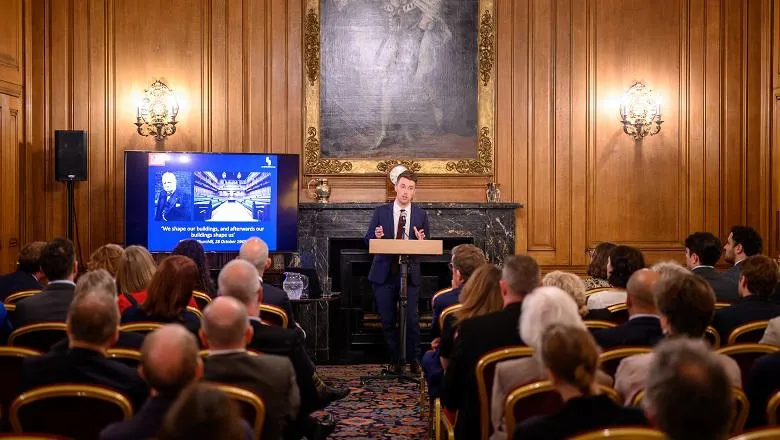The building’s history is fascinating in itself, but studying history in this way has revealed a great deal about the differing working styles and approaches of successive prime ministers, competing views of what a prime minister - and No. 10 - should really be, and the battle for influence that takes place inside successive administrations
Dr Jack Brown
03 October 2019
The shaky foundations and confusing corridors of power at No. 10 Downing Street
Dr Jack Brown reveals what lies behind the iconic black door of No. 10 – and what it tells us about different Prime Ministers who have held office.

No. 10 Downing Street has been the backdrop for so many major political moments and a new book by Dr Jack Brown has revealed its remarkable history.
His book, Number 10: The Geography of Power at Downing Street, which was launched at a reception inside No.10 this week, demonstrates how the building impacts on the business that goes on inside and how successive Prime Ministers have sought to shape it while in office.
As relatively few people get to go through the security gates and through the door, Dr Brown hopes his book will open up the building to the wider world. One common misconception is that it is small inside.
“No. 10 is really three buildings knocked together,” he explained. “The famous terraced house on Downing Street is joined to a much grander property at the back by a series of corridors and rooms – so it can be very disorientating. A small cottage was also incorporated into No. 10 - formerly occupied by a Mr Chicken in the early 1700s, about whom little is known.”
Dr Brown said the greatest surprise is the fact that it hasn’t fallen down.
“By the time it was reconstructed in the mid-twentieth century, they had to employ an on-site carpenter to fix doors and windows that regularly became inoperable as the building shifted about, and it was a serious fire risk. There was also a decent chance that the Cabinet might fall through the floor when meeting.”
It was built extremely cheaply, on marshy ground, with poor foundations, in the late seventeenth century and it has been falling apart ever since.
Dr Jack Brown
The book launch on 30 September was attended by King’s staff, Visiting Professors, former occupants of Downing Street and a range of external partners. During the evening, attendees heard from Peter Hill, recent Principal Private Secretary to the Prime Minister and Baroness Bull who spoke about King’s partnerships with government departments and other London institutions.
Dr Brown became Researcher in Residence at No. 10 Downing Street as a result of the emerging partnership between the Strand Group/Policy Institute at King’s and No. 10.
Officials at No. 10 realised no-one had looked at the archived papers of the architect Raymond Erith, who was tasked with leading the reconstruction of No. 10 and its surrounding buildings in the late 1950s and early 1960s.
“This was the only time that No. 10 was seriously reconsidered, and the decisions taken at that point have influenced No. 10 - and both working and private lives of its occupants - ever since,” he said.
Dr Brown will be sharing his findings and expertise as part of teaching the Strand Group/Department of Political Economy Undergraduate module ‘Prime Ministers and Leadership since Thatcher: Theory and Practice’.
The current Researcher in Residence at No. 10 is Michelle Clement, a King’s PhD student and a co-teacher at The Strand Group.


